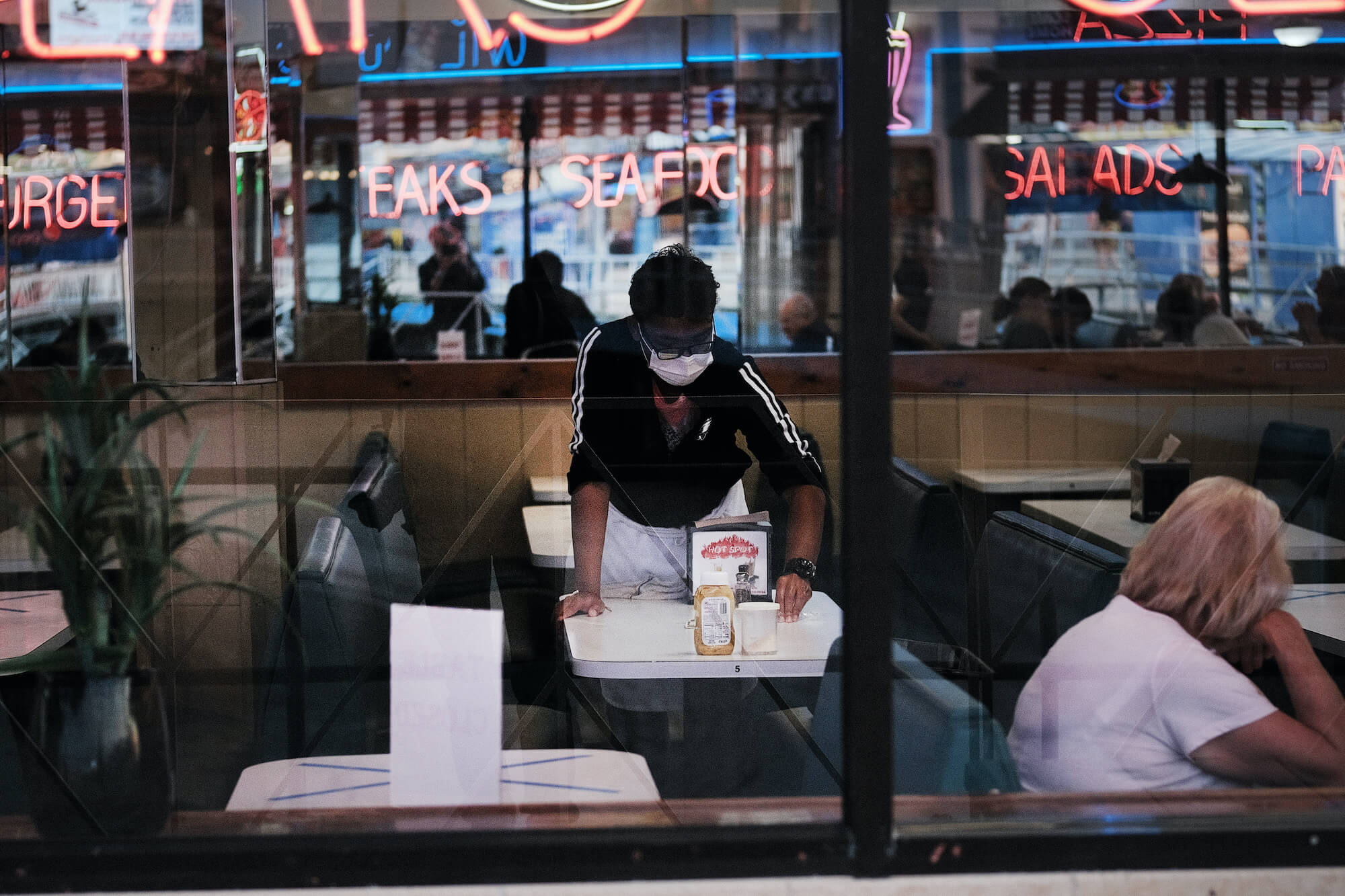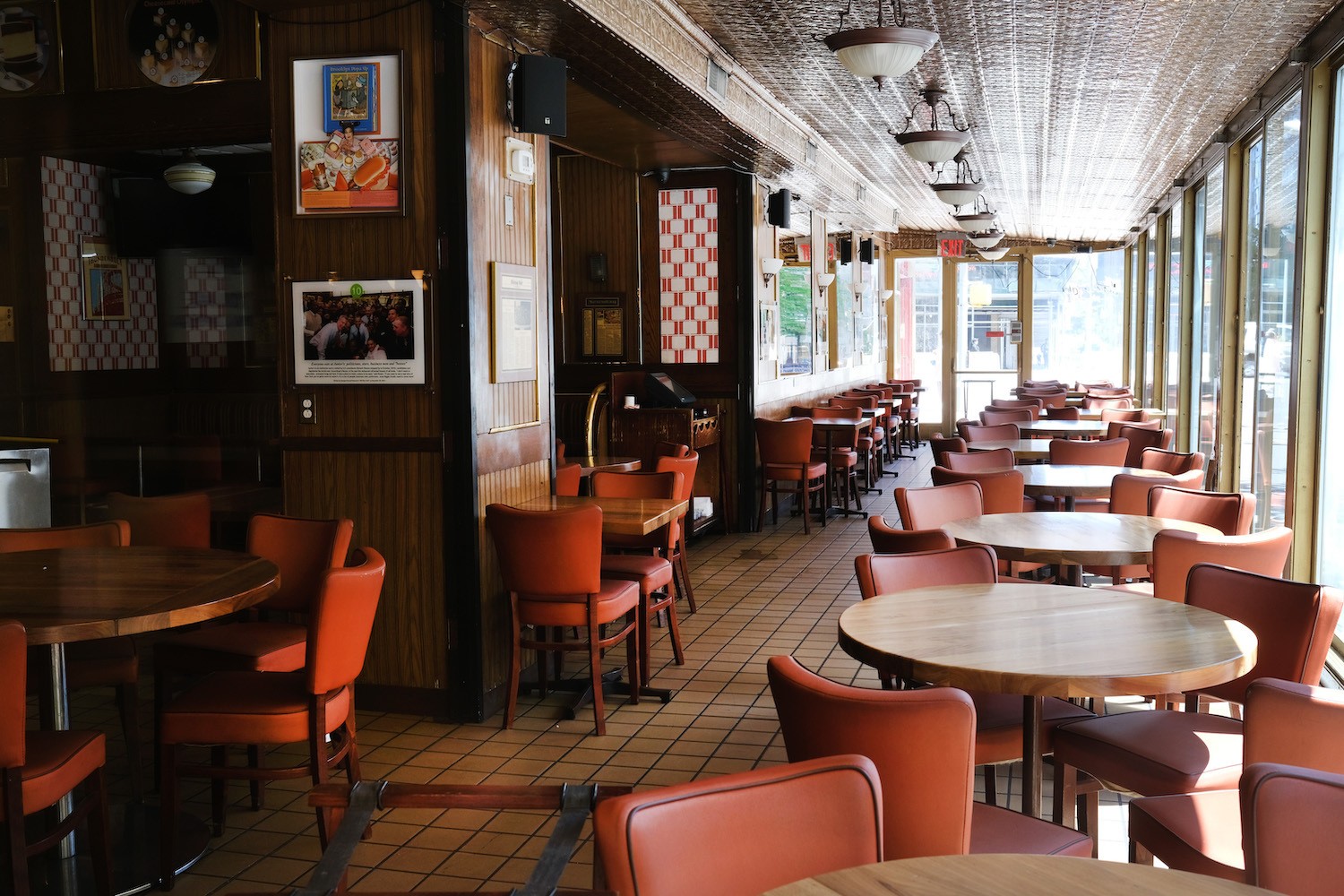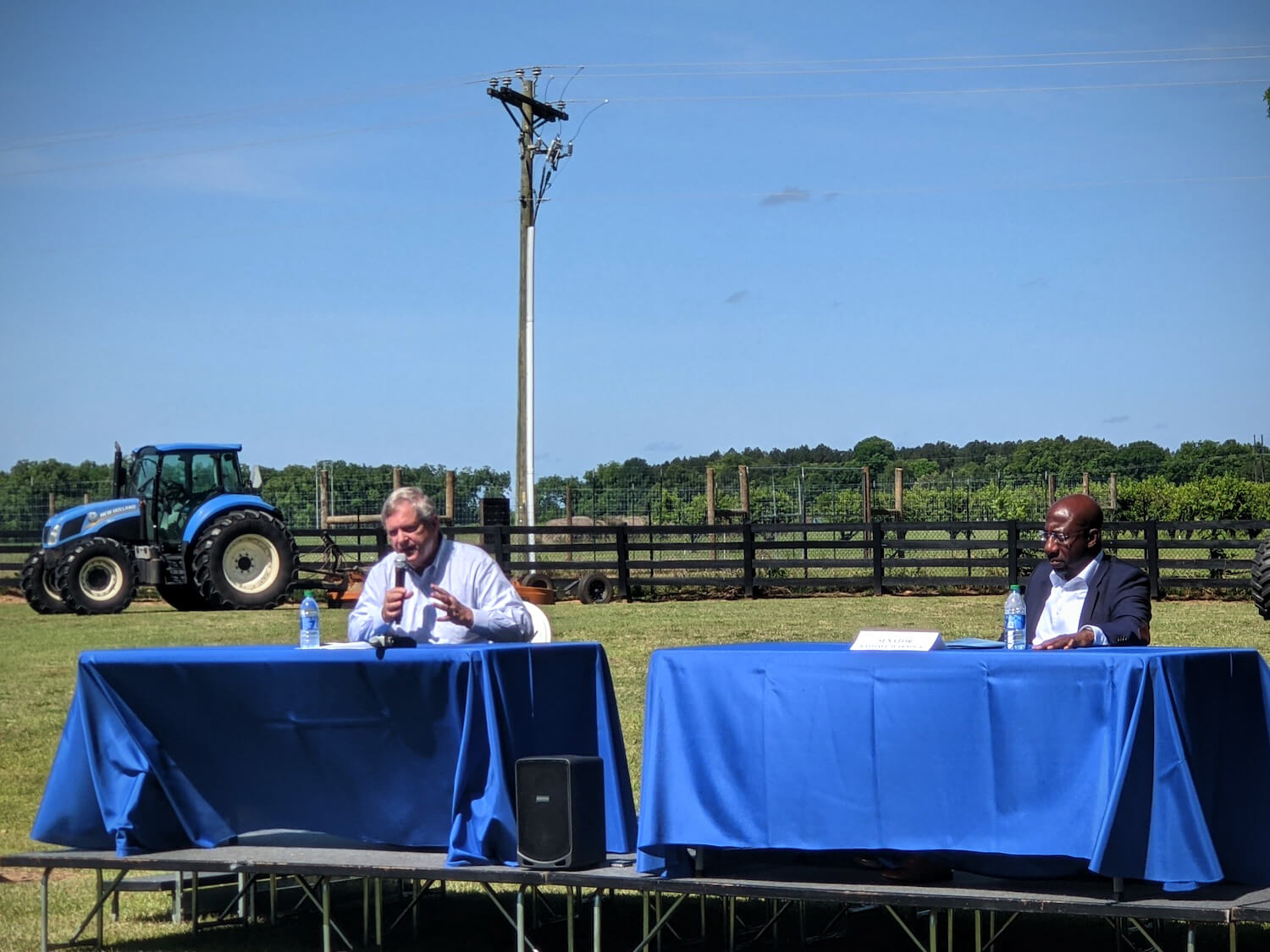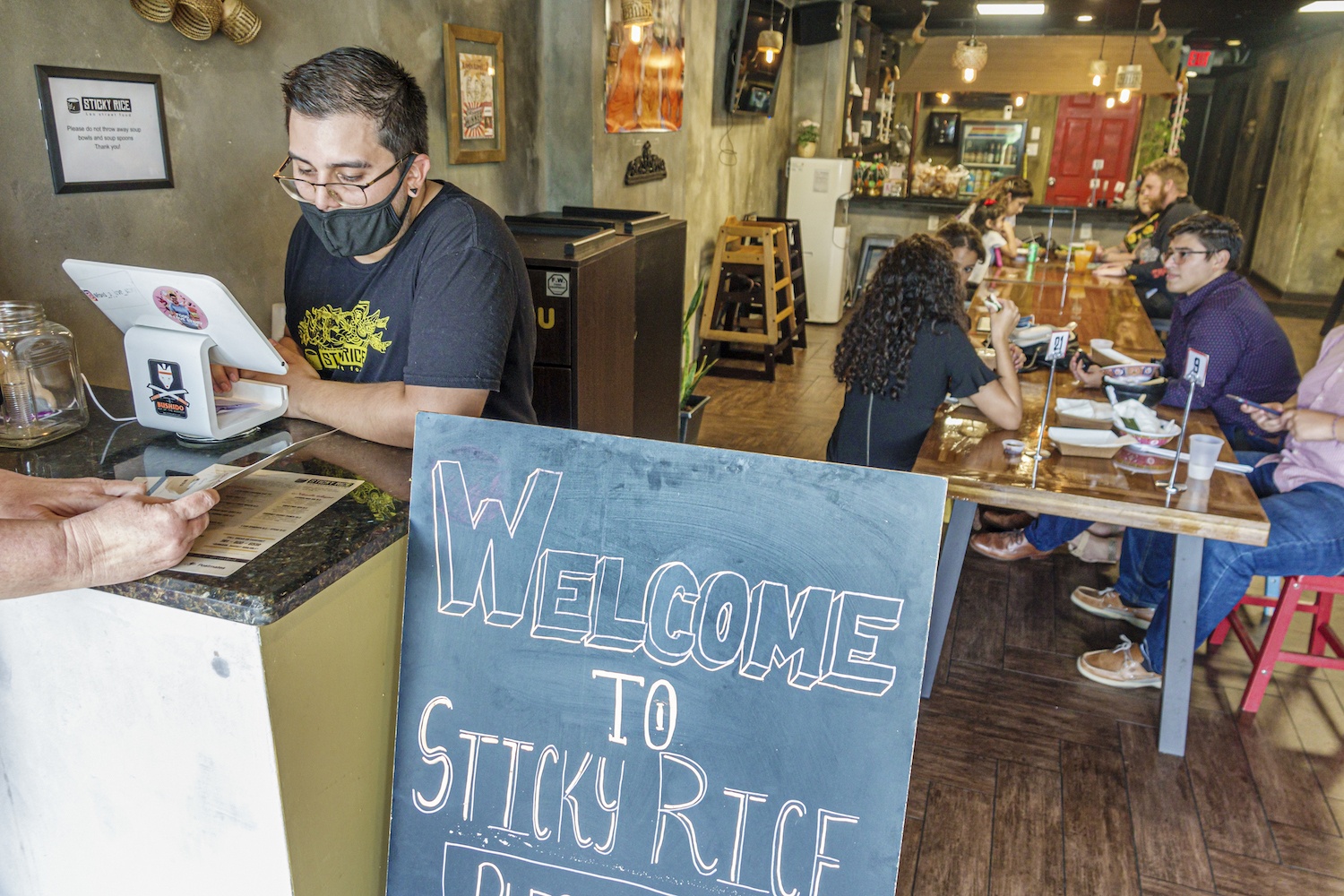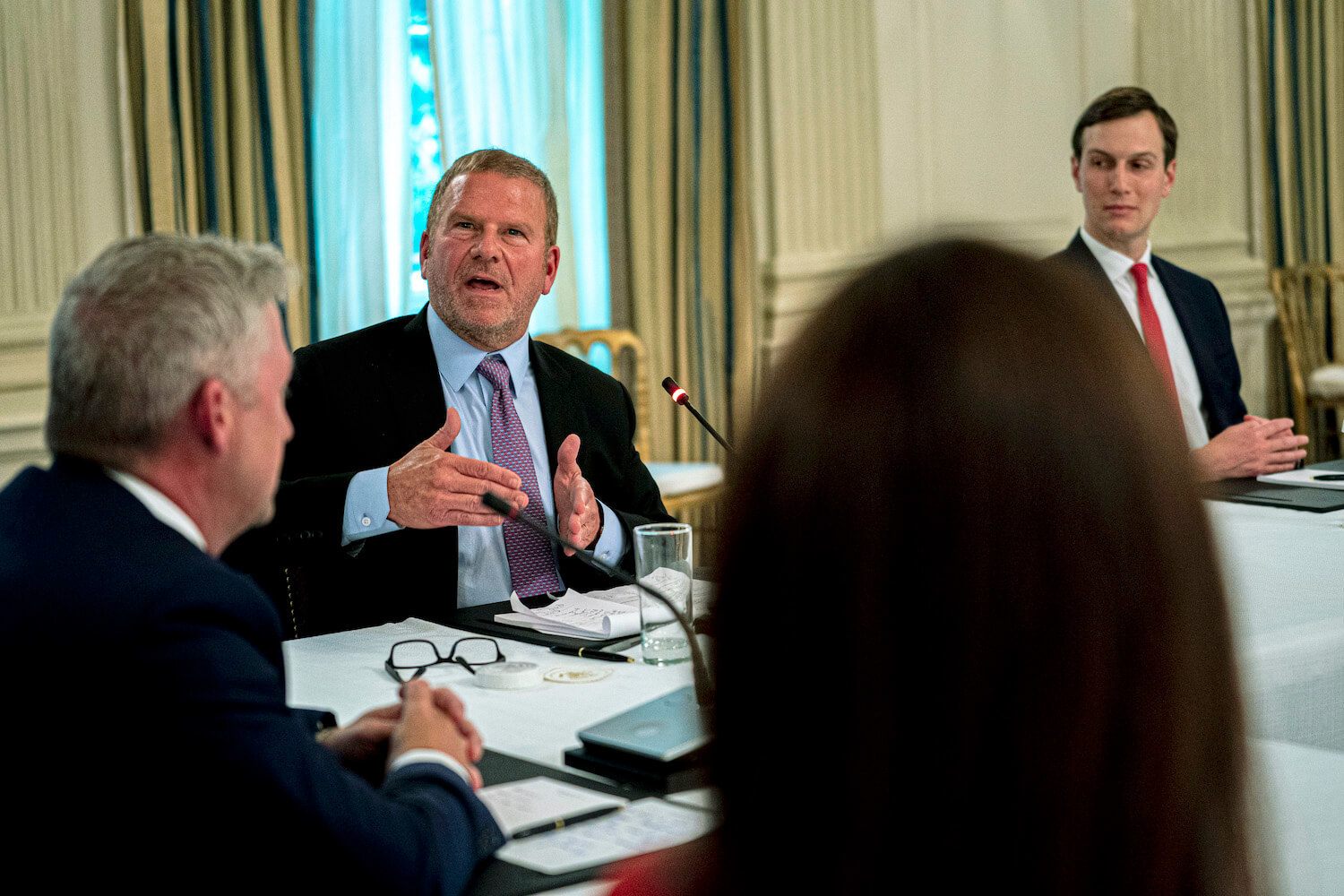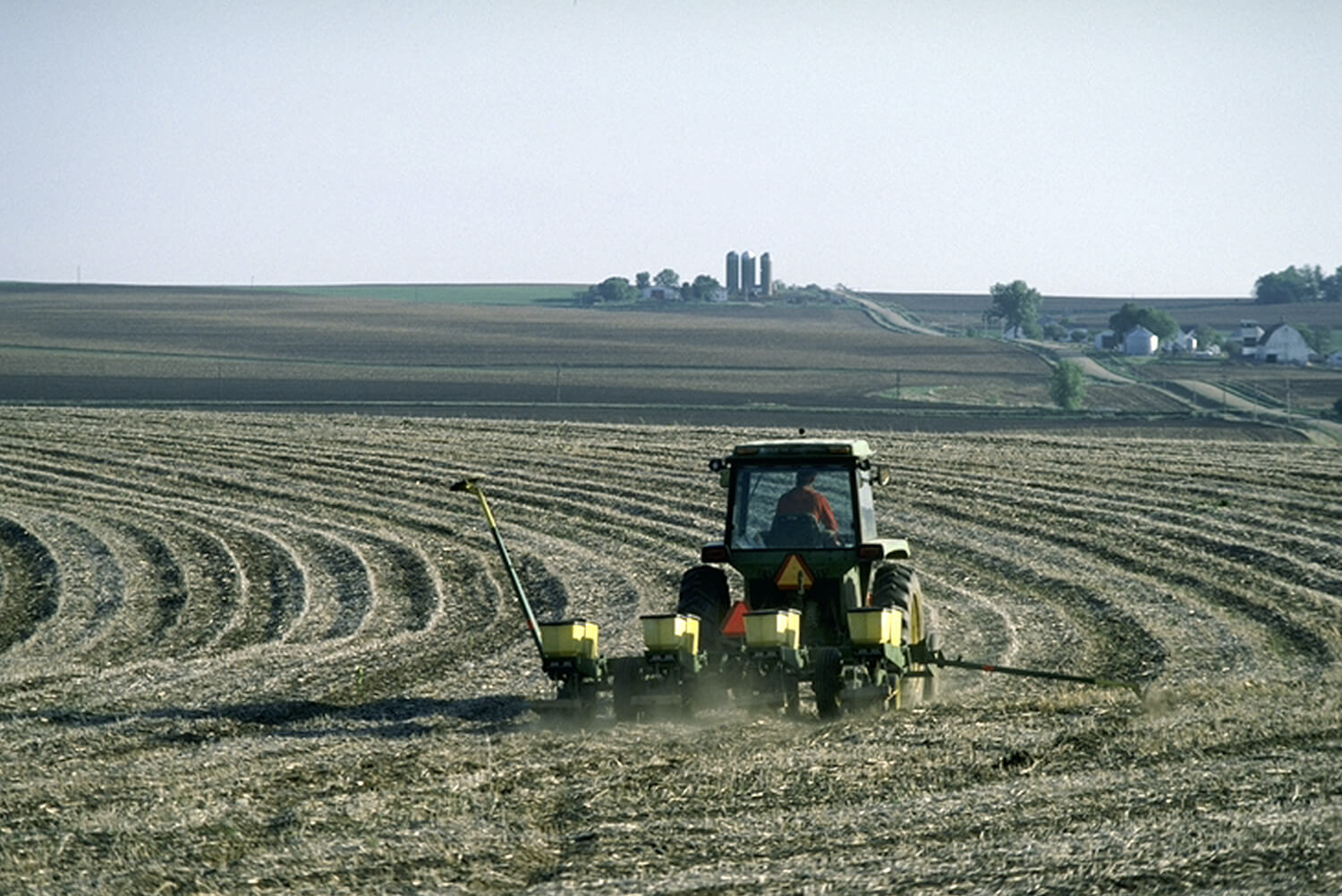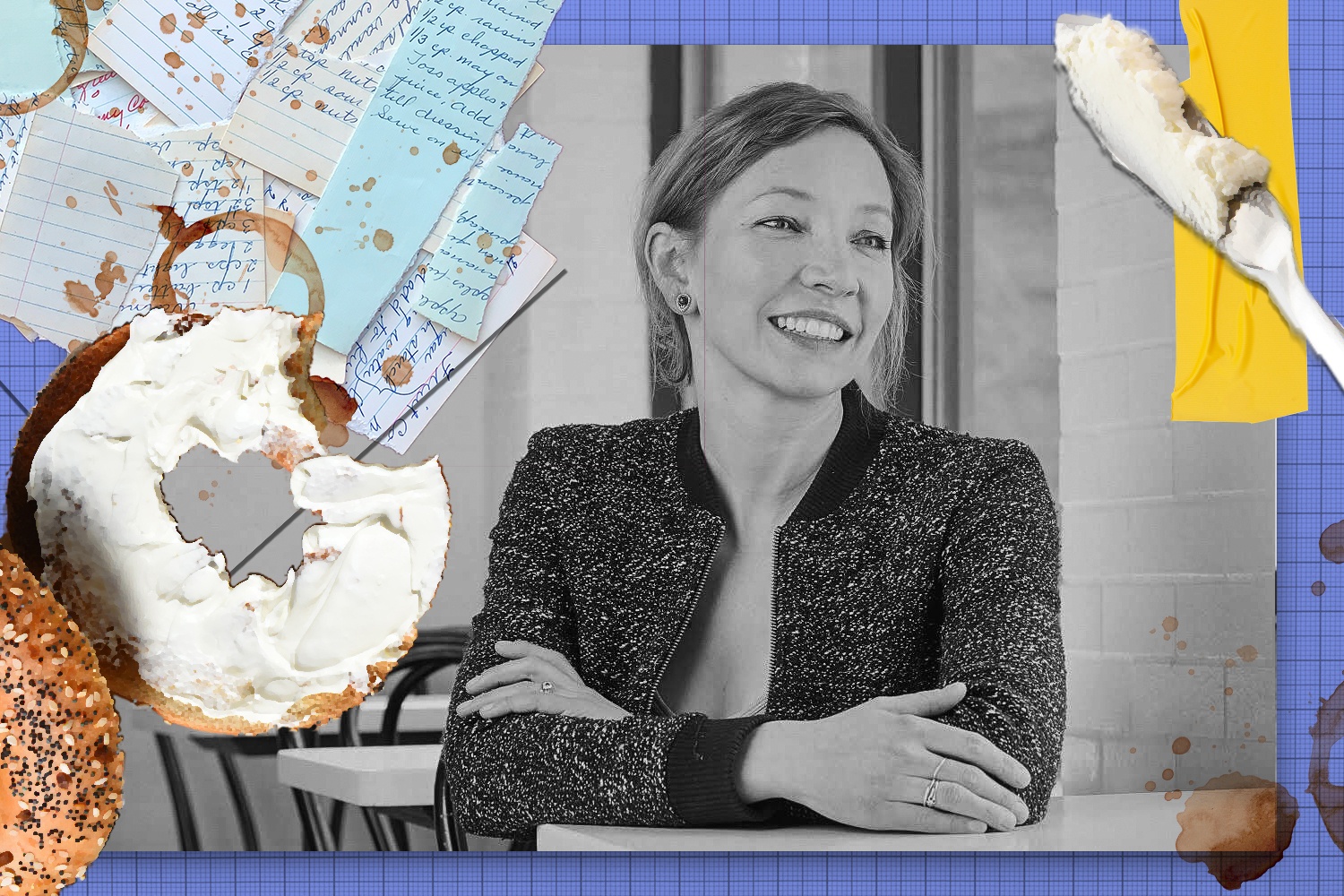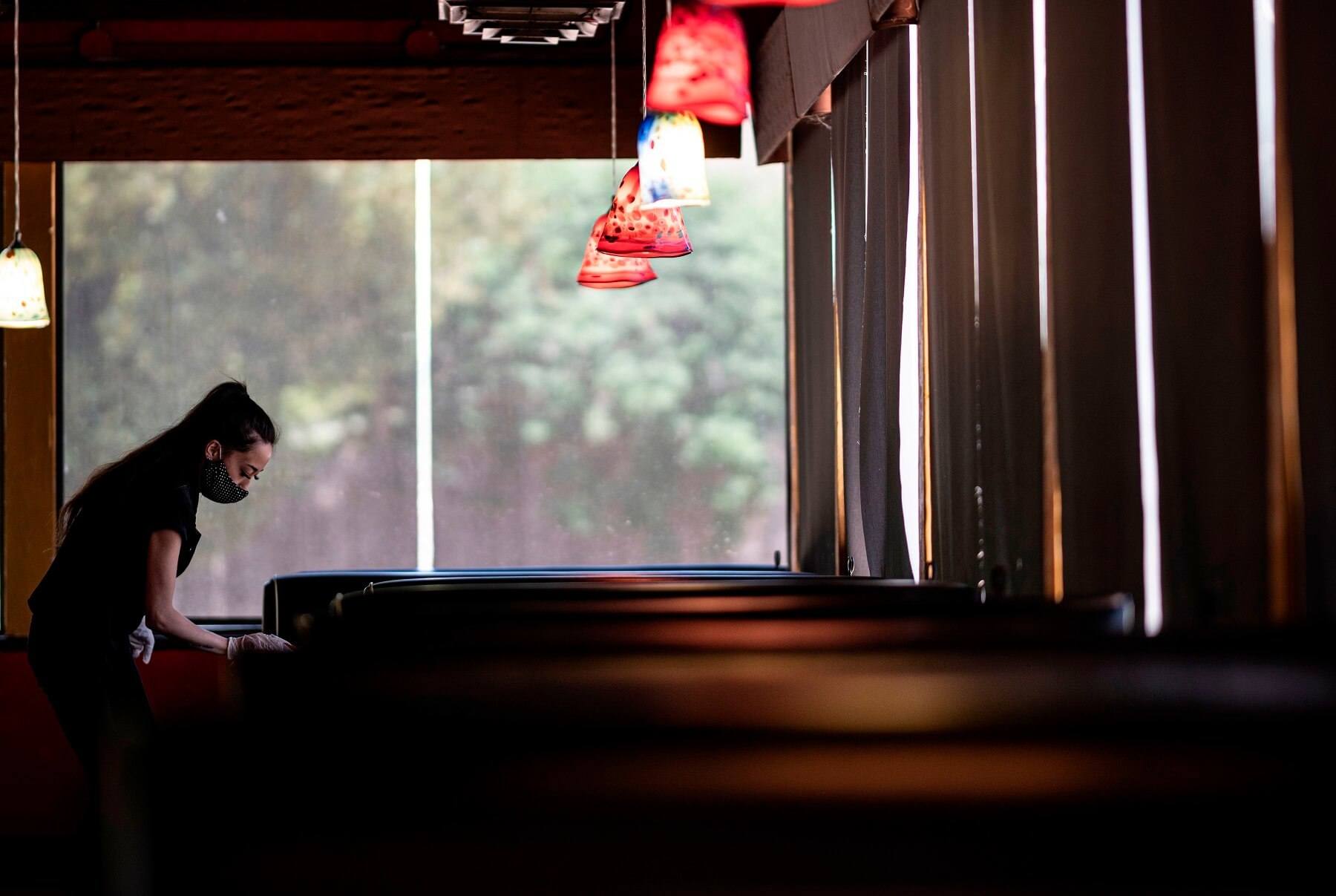
JOHANNES EISELE/AFP via Getty Images
A Counter analysis found that just 5 percent of awardees received 40 percent of the Restaurant Revitalization Fund—plus other quick takeaways from newly released federal data.
On Friday, the Small Business Administration (SBA) released data on who was able to receive money from the Restaurant Revitalization Fund (RRF), and how much they got. The program, which offered no-strings-attached grants to restaurants that lost business during the pandemic, received more than 370,000 applications and ultimately funded just over 100,000 restaurants.
The program, first authorized in March, was supposed to distribute financial relief to a hospitality industry heavily weathered by the pandemic. Congress funded it to the tune of $28.6 billion, and mandated that women, veterans, and people of color get first pass at the aid in the program’s initial three weeks. What was originally a measure intended to ensure equitable access to the money quickly became a sticking point for conservative groups.
Many business owners said that the financial uncertainty caused by the program’s rocky rollout made it difficult to make decisions about their recovery.
Beginning in May, restaurants owned by white men and represented by right-wing legal groups began to sue SBA over the program rollout, arguing that prioritizing specific demographics was unconstitutional and a form of discrimination. The lawsuits notched early wins in federal courts, and later that month, SBA disclosed that it had stopped processing applications filed by priority groups altogether in response to the litigation.
That’s not all. Beginning in June, women and people of color restaurateurs began to report that SBA was now rescinding previously approved awards, including money that had been promised well before the legal challenges had taken effect. Many business owners said that the financial uncertainty caused by the program’s rocky rollout made it difficult to make decisions about their recovery. In addition, those who didn’t receive aid felt like they faced significant economic disadvantages compared to their competitors who did.
Restaurant industry advocates have been calling for transparency about the program’s rollout ever since SBA hit pause on processing applications from priority groups. The new information shared by the agency breaks down the program’s relief distribution by region and demographic. Here are three major takeaways, based on data analyses by The Counter.
1. Five percent of restaurants received nearly 40 percent of the funds
A small fraction of relief recipients received a significant share of the money available, The Counter found. Just five percent of awardees received grants worth $1 million or more. However, these awards combined made up nearly 40 percent of the fund’s total value.
Most RRF participants received far less in aid: The program’s average award was slightly less than $300,000. For further comparison, the 40 percent of restaurants that received the smallest grants each took $100,000 or less. Meanwhile, 66 businesses received awards worth $10 million, the program’s upper limit. (The Counter reached out to SBA for comment and will update this post if the agency responds.)
2. One in 10 RRF recipients was part of a franchise
Despite rules that limited chain restaurants’ access to funds, approximately 10 percent of grant recipients were franchise operators. Some of the biggest names we found include Subway, Dunkin’ Donuts, Golden Corral, and McDonald’s.
How did this come to be? The American Rescue Plan explicitly excluded publicly traded companies and restaurants with more than 20 locations from getting RRF money. However, these restrictions may have been easily circumvented by the franchising business model: Franchise operators are considered independent businesses from their parent companies, even though they are required to pay rent, fees, and a significant portion of revenue to them.
That means that money from the RRF can still make its way up to the coffers of a publicly traded company, like McDonald’s, the biggest fast-food chain in the country.
This mirrors a pattern that we reported on last year with the SBA’s Paycheck Protection Program, where some of the country’s biggest fast-food franchising companies received $1 billion in low-interest loans, despite the program’s stated intent of supporting small businesses specifically.
3. More than two out of three RRF recipients identified as businesses owned by women, veterans, or people of color
Despite the litigation and subsequent award-rescinding by SBA, it appears that relief money was still able to reach priority groups carved out by Congress. Restaurants owned by women, veterans, and minorities made up two-thirds of RRF awardees, and they received a similar proportion of the fund’s total value, as well.
Breaking the numbers down at a more granular level reveals some additional insight: We found that woman-owned businesses made up 44 percent of relief recipients, but received just $10 billion worth of the $28.6 billion RRF. Dollars for other priority groups were much more comparable with their share of recipients. Veterans made up slightly less than six percent of awardees and they received a commensurate proportion of relief dollars. Socially and economically disadvantaged applicants—a category that includes both minorities and businesses in poor areas—made up 34 percent of recipients and received slightly less than 32 percent of funds. (These groups are expected to overlap. For example, a restaurant may be owned by a woman who is also a veteran.)
—
Friday’s data gives new insight into just how relief money was distributed within the hospitality industry, but advocates also say that it also raises new questions. The Independent Restaurant Coalition (IRC) pointed out that SBA has not yet shared information about how many restaurants saw their promised awards rescinded.
Restaurants left out of the program have been calling on Congress to quickly replenish the fund, in order to make sure every business within the hospitality industry has the same opportunity to recover debts incurred during the pandemic. Proposals to refill RRF to the tune of $60 billion have garnered bipartisan support in both the House and the Senate, though they haven’t really moved forward since their introduction. Undeterred, advocates are still demanding action.
“The Restaurant Revitalization Fund helped tens of thousands of local restaurants and bars get the relief they need,” said Erika Polmar, executive director of IRC, in a press statement. “But Congress must refill the program to ensure the tens of thousands more who need help can get it.”


